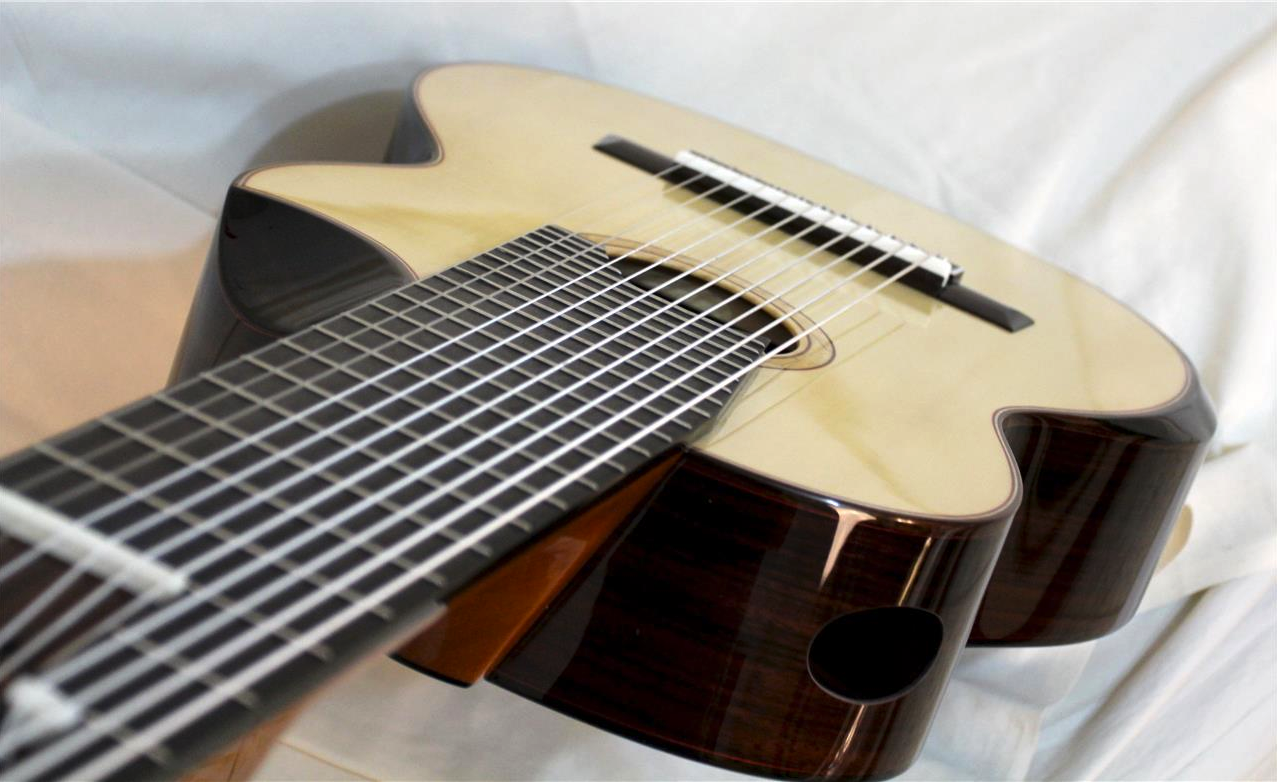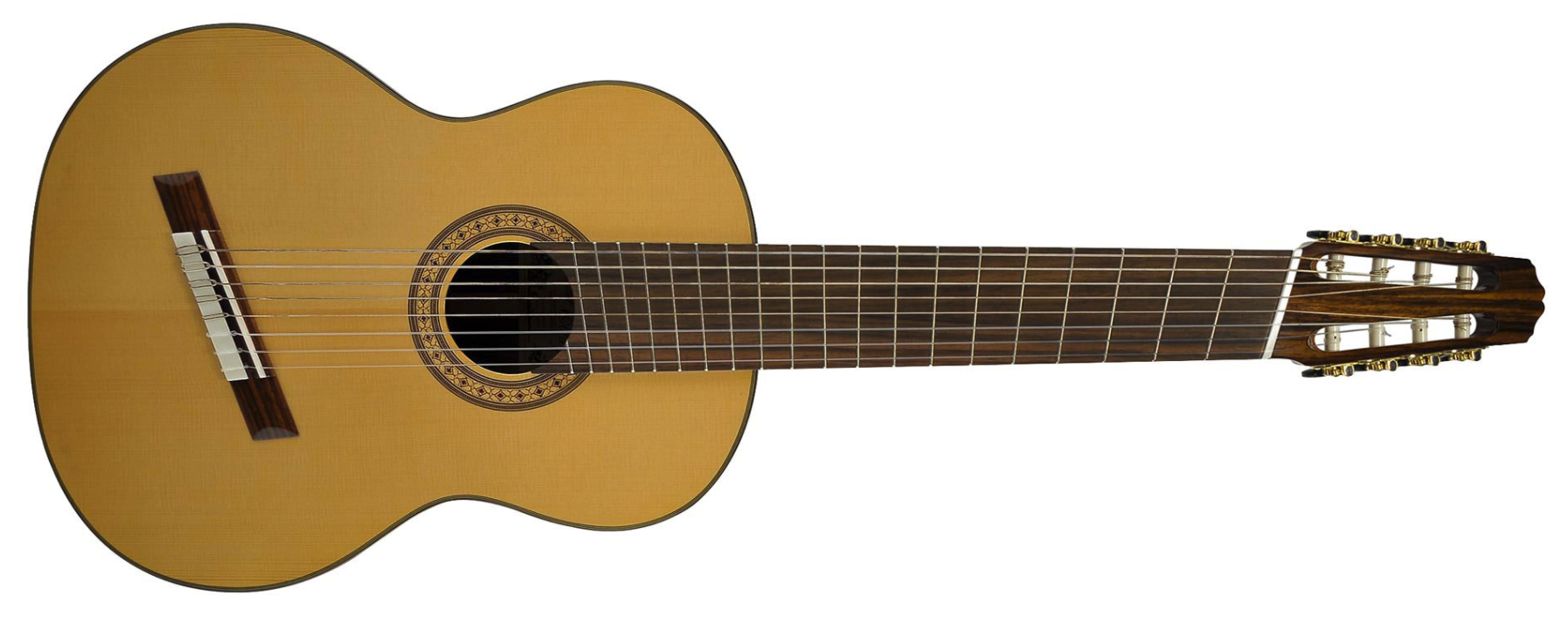Introduction
Guitars with additional strings are nothing new. From the earliest days of the lute instruments that resembled guitars have always been around. However, recently guitars with more than 6 strings in the classical guitar realm have started to gain in popularity. In electric guitar circles Steve Vai is probably heralded as leading the renaissance in multi-stringed or extended range guitars even though they existed well before he burst onto the scene in the early 80s.
It was Ibanez that took up the challenge of designing a 7-string guitar that could meet Mr. Vai’s demands. It would seem that the desire to have an extended range on guitar crossed over into the classical scene too. You may be thinking to yourself that Narcisco Yepes had already been playing an 11 string for many years and that is true however his instrument was extremely rare and those guitars weren’t truly adopted into mainstream classical guitar.
What does this have to do with Multi-scale/Fanned fret classical guitars?
However, I digress. What does all of this have to do with fanned frets? Well, the thing is this – the more strings you add onto a guitar the greater the chances are that the intonation will become worse and worse. Bass strings need extra tension or they become ‘floppy’ and almost unplayable. The way to circumvent this is to make the length of the string longer i.e. the distance from the bridge nut to the neck nut should be increased the problem is you can’t really do that to the treble strings otherwise they’ll break or the tension will be so tight that you won’t be able to play them.
Solution!
Enter the ‘fanned fret’ or ‘multi-scale’ system. Smart luthiers out there realised that if they could angle the frets, bridge, & neck nuts outwards from the treble strings they could increase the length of the bass strings whilst retaining the same or very similar scale length on the treble strings. Here’s an example from Salvador Cortez guitars:
Wouldn’t this be hard to play?
The simple answer is no! Think about the natural ‘angles’ that your fingers take when you place them on guitar…our fingers naturally splay outwards and upwards and this perfectly mirrors what is taking place on a fanned fret guitar. The result is a guitar that actually feels perfectly natural to play.
Looking for a classical guitar with Fanned Frets?
Here is a list of luthiers that are making multi-scale classical guitars:
- Stoll guitars
- Tom Bills
- Michael Greenfield (think Andy McKee)
Should you have one?
If you are planning on moving into extended range classical guitar playing then it should definitely be a consideration although strictly speaking it isn’t a necessity. The most important thing is that it works well with you – not for you. The guitar as much as possible should be a natural extension of you. It should feel comfortable sitting in your lap and comfortable for your hands and fingers.
Check out my other Modern Classical Guitar Design articles
Part 9: Reinforced Carbon Fiber Neck
Part 7: Arched back
Part 6: Double Tops
Part 5: Lattice Bracing
Part 4: Armrest
Part 3: Soundport
Part 2: Indented Cutaway
Part 1: Elevated Fingerboard



